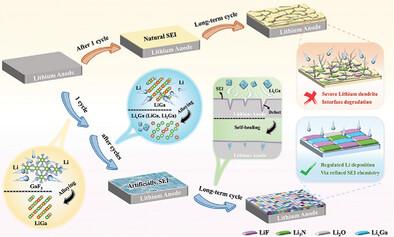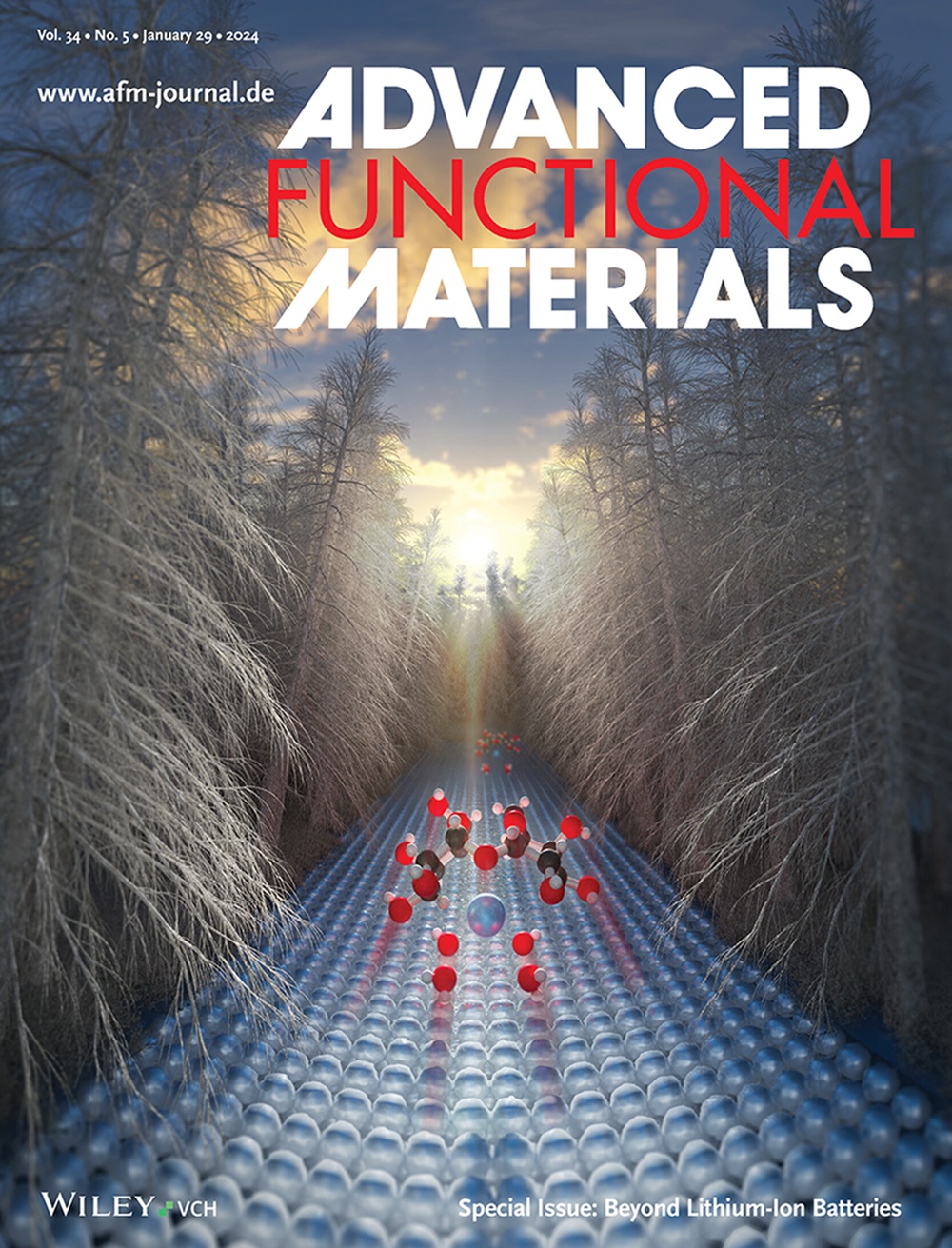原位构建 LiF/Li3N/LixGa 混合 SEI 以提高基于琥珀酸腈的长寿命固态金属锂电池的性能
IF 18.5
1区 材料科学
Q1 CHEMISTRY, MULTIDISCIPLINARY
引用次数: 0
摘要
本文章由计算机程序翻译,如有差异,请以英文原文为准。

In Situ Construction of LiF/Li3N/LixGa Hybrid SEI to Boost Long-Lifespan Succinonitrile-Based Solid-State Lithium Metal Batteries
Succinonitrile (SN)-based in situ polymerized solid-state electrolytes (SIPSSEs) for lithium batteries have attracted considerable attention due to their high ionic conductivity, wide electrochemical stability window (ESW), and potential for large-scale applications. Despite these advantages, the polar cyano groups in SN molecules lead to significant interfacial problems upon direct contact with metallic lithium (Li), including unstable solid electrolyte interface (SEI) and the growth of Li dendrites, which impede the further application of SIPSSEs to solid-state lithium metal batteries (SSLMBs). To address these challenges, here a GaF3-modified SIPSSE (GSNE) is developed by incorporating GaF3 and fluoroethylene carbonate to passivate metallic Li and employing ethoxylated trimethylolpropane triacrylate to anchor SN molecules. As a result of this strategic electrolyte component design, GSNE achieves an ionic conductivity of 1.3 × 10−3 S cm−1 at 30 °C as well as wide ESW up to 4.6 V. Additionally, a LiF/Li3N/LixGa hybrid SEI is formed on the metallic Li surface through an in situ alloying reaction. This hybrid SEI demonstrates superior interfacial stability and fast Li⁺ transport kinetics, as confirmed by various advanced characterization techniques and theoretical calculations. Consequently, LiFePO4/GSNE/Li cells exhibit excellent rate performance and cycling stability. This work provides new insights into the designing of long-lifespan SIPSSEs-based SSLMBs.
求助全文
通过发布文献求助,成功后即可免费获取论文全文。
去求助
来源期刊

Advanced Functional Materials
工程技术-材料科学:综合
CiteScore
29.50
自引率
4.20%
发文量
2086
审稿时长
2.1 months
期刊介绍:
Firmly established as a top-tier materials science journal, Advanced Functional Materials reports breakthrough research in all aspects of materials science, including nanotechnology, chemistry, physics, and biology every week.
Advanced Functional Materials is known for its rapid and fair peer review, quality content, and high impact, making it the first choice of the international materials science community.
 求助内容:
求助内容: 应助结果提醒方式:
应助结果提醒方式:


